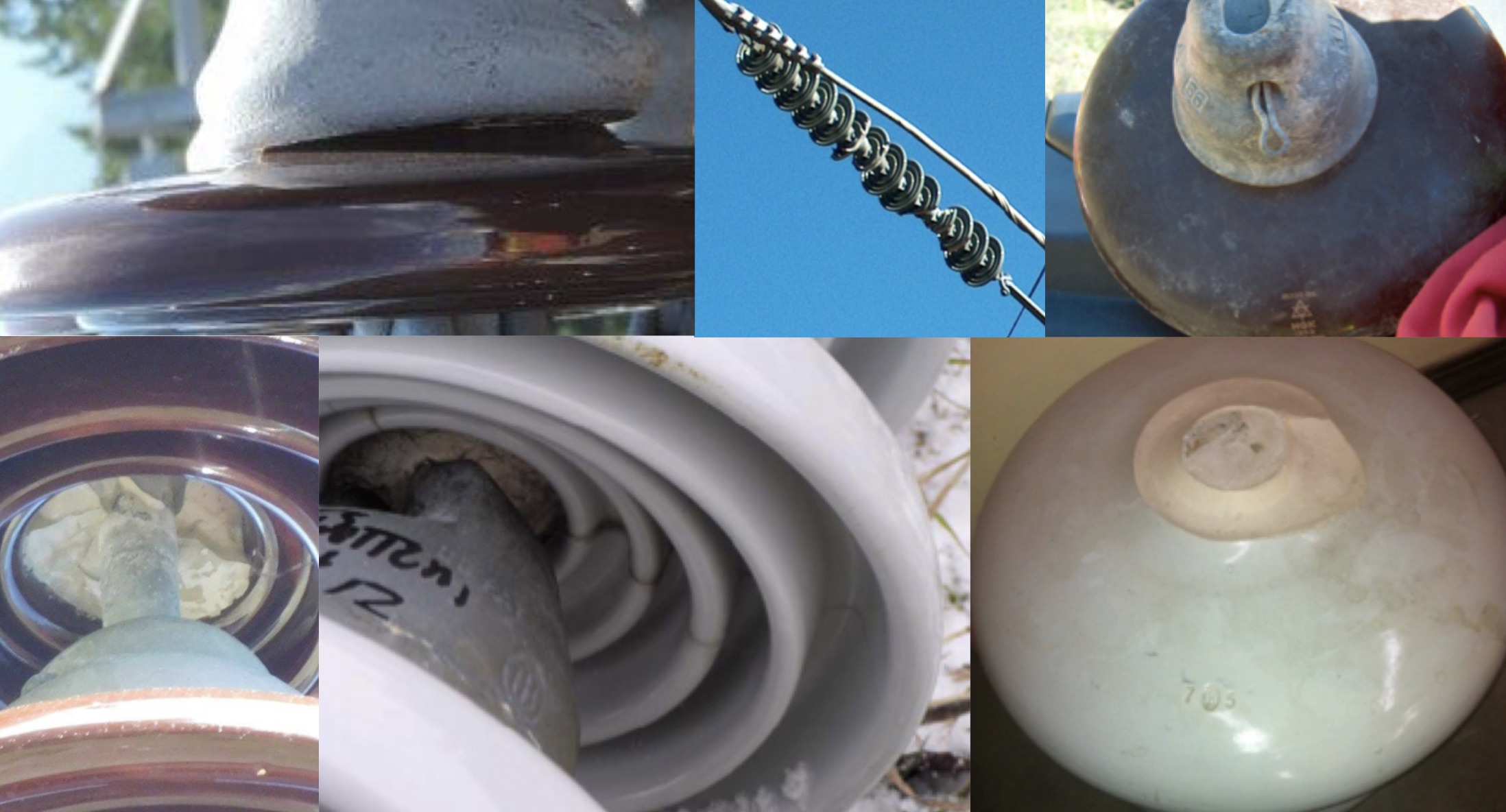[inline_ad_block]
Most utilities and large industrials with transmission networks have varying degrees of Condition Assessment Programs. Insulation reviews have become an important part of such inspections and ultimately the safe operation of these facilities. While a variety of methods are available for insulation inspection, none are as quick and efficient as simple visual observation by experienced inspectors. With inspection and life assessment of insulation, it is important to understand: what to watch for, how to look for signs of damage, where to look for problems and why damage may be starting to occur.
A paper and presentation by long-time transmission insulation specialist, Dennis Schlender, at the upcoming 2019 INMR WORLD CONGRESS in Tucson, Arizona (Oct 20-23) will provide a practical approach to field inspection and related condition assessment needed for transmission insulation components. This approach does not necessarily eliminate possible need for additional inspection techniques but rather should be used to help establish priorities for implementing them.
A large number of power transmission projects were built in North America and elsewhere during the 1950s, 60s and 1970s as part of rapid expansion as well as interconnection of system grids. This concentrated period of many new projects has led to a common theme of ageing infrastructure that is now approaching end of life. Moreover, also underway during this period were a number of technological enhancements in transmission components, in particular in regard to alternative types and design of insulation.
While the line inspection process has begun improving across the industry in recent years, training and planning for condition assessment projects are often not high enough on the list of priorities. This in spite of the fact that data being collected is becoming more and more important to justify transmission system improvements as facilities age. For example, condition assessors and inspectors are often not sufficiently prepared, do not always understand what is needed or are not fully aware of the appropriate level of detail for inspecting insulation on transmission lines. In fact, many such assessors end up being linesmen on light-duty or with spare time available for inspections. This does not set the stage for an appropriately rigorous inspection plan.
Utilities have a number of options to complete a detailed review of insulation performance, including removal and lab testing of samples from the line and use of thermal imaging as well as daylight corona cameras. Still, given the possible high costs involved and possible budget limitations, the more coordinated and integrated a condition assessment process can be made, the better value to be realized by the transmission system owner. Indeed, co-ordinating and consolidating the condition assessment program can lead to significant savings and more effective use of utility capital.
Field Inspection
Planning
Efficient planning for field inspections is becoming ever more important with the challenges arising in modern utility environments. For example, regulatory controls on utility budgets are rapidly competing with legal liability issues. At the same time, factors such as access to lines, weather conditions, landowner co-operation and concerns, increased system loading, etc. can start interfering with one another as competing priorities. This makes it increasingly important that condition assessment programs improve subsequent product planning and budgeting processes at the same time as helping reduce utility risk.
Training
Utilities and in particular large industrial customers do not always devote sufficient effort to train inspectors. Contrast this with the amount of dollars typically spent on completing the inspections themselves or the possible outage costs in the event of component failure. Such an imbalance can be a significant lost opportunity to improve the inspection process as well as the accuracy of information being collected. Since financial decisions are usually driven and formulated based on data being collected, any reasonable efforts to improve results of line inspections should be implemented. Too often, inspections are being undertaken using basic tools and equipment and linesmen draw from their judgement based on past and recent experience. But the qualifications needed for inspectors may not fit the backgrounds of engineers or linemen. Often, the most successful inspectors need some exposure to both backgrounds and this is where the important role of training comes in.
Questions often arise as to what constitutes a proper transmission condition assessment plan. Some utilities believe that having a helicopter fly-by on an annual or semi-annual basis is adequate to consider the line as having been inspected. Yet, while helicopter patrol does demonstrate a form of due diligence for major concerns, it does not provide sufficiently detailed information on assessing condition at the component level. Helicopter patrols can be supplemented with mounting infrared and corona cameras to significantly improve the results obtained. At the same time, given greater field flexibility, detailed ground inspections can serve to facilitate more effective and detailed condition assessment. The key issue becomes ensuring that such patrols are able to capture adequate information and assessment, even on relatively subtle issues, as typical for most insulation components.

CLICK TO ENLARGE
Some of the most important areas to address in training, specifically with respect to insulation, include:
• Electrical issues are the most important yet often taken for granted;
• Characterizing damage through visual inspection even though problems may be subtle;
• Appearance of various problems, where to look for them and why they occur;
• Rating and ranking the various levels of insulation degradation. Training examples can be valuable in defining degree of concern;
• Specific issues that the line under inspection has been experiencing and review of historical outage records;
• Since not all problems require replacement, this must be discussed to clarify;
• Each type insulation offers usage benefits but also different susceptibilities and modes of failure.

CLICK TO ENLARGE
Attend the 2019 INMR WORLD CONGRESS to hear Mr. Schlender’s detailed proposals for more practical field inspection and related condition assessment of transmission components, such as insulators. These proposals will not only minimize financial and management burdens related to getting assessments completed in an efficient manner but also help focus priorities where they can be most effectively addressed.









